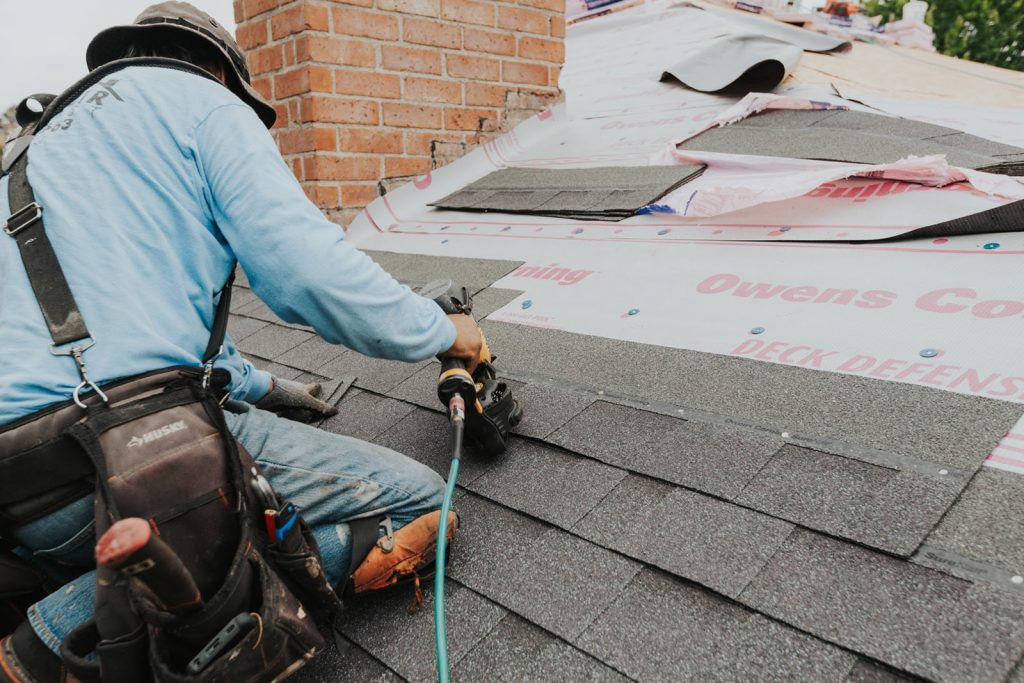
The roof is critical in shielding your home from the sun, rain, and other elements of nature. However, your roof may sustain damage over time owing to a variety of factors such as high winds, falling tree limbs, and even local wildlife. Whatever the cause, the damage could progress to the point where repairs or perhaps a complete roof replacement would be required to remedy the situation.
Here’s a guide on the different kinds of roof damage that need your immediate attention.
Types of Roof Damage That You Shouldn’t Ignore
Roof Blisters
A blister occurs when trapped pockets of air form between layers of roofing. When the temperature outside rises, the air expands from the heat, raising that section of the roof and forming blisters.
You may be able to ignore small blisters for the time being, but they can rapidly grow as air accumulates. If you discover large bubbles (greater than 2 inches in diameter), it’s best to have them repaired as soon as possible. One large blister can spread to others on the roof, or become even larger and eventually rupture, resulting in leaks.
Missing Shingles
Shingles can become dislodged by high winds and flying debris, exposing the roof’s underlayment to weather damage. If you ignore the missing shingles, you’ll likely end up with leaks and harsher indoor temperatures. Wildlife such as raccoons and squirrels may seek shelter in the remaining roof structure, causing additional damage. Contact a professional roofing company to replace missing shingles before the problem gets bigger.
Loose or Corroded Roof Flashing
A roof’s flashing pertains to the thin metal sheets—typically aluminum or galvanized steel—that are installed under shingles. The flashing directs water away from the joints of architectural features, such as the chimney, skylights, or dormers.
Heat and moisture will corrode and deteriorate the flashing over time. The flashing could also dislodge when wildlife or debris pull or strike them, and result in water intrusion and costly interior damage to your home.
Roof Punctures
Though California is known for having beautiful weather, the occasional storm can cause wind-carried debris and overhanging tree branches to fall and puncture the roof. Punctures can also occur from the weight of foot traffic from people who visit the roof: possible HVAC contractors, painters, chimney sweeps, and house occupants.
Why Should a Bad Roof Be Addressed Promptly?
You might be tempted to put off roof repairs to save money. But keep in mind that you could end up having to deal with much costlier emergency repairs later on. Leaving the roof alone means you’re letting the damage worsen.
And since your roof is your house’s first line of defense against the elements, a damaged roof can’t protect you and the rest of your household.
What Are the Signs of a Failing Roof?
So how can you tell if your roof’s got problems? Let’s check out some of the common exterior and interior signs of roof damage.
- Water Stains: A leaky roof can let water run down to the ceiling and the walls inside your house, resulting in water stains.
- Pests: If there are pests such as rodents and raccoons in the attic, they might have entered through a loose shingle, a flashing, or even a roof puncture.
- Mold on Exterior Walls: If the flashing no longer directs water away from joints, the moisture that sticks to the walls can allow mold to grow.
Even if there are no visible signs of roof damage, roofing systems still have a life span. For example, asphalt shingles typically last between 15 to 30 years and have warranties that are just as long. Have your roof inspected to see what needs to be repaired or replaced.
Need a Roofing Expert for Repairs?
While it’s tempting to fix the roof damage by yourself, you could risk voiding your warranty and insurance policy as it can lead to even further damage. To ensure that your roof repairs are done safely and properly, consider hiring a professional roofer from Roof Repair Specialist. We’ll conduct thorough evaluations of your roof to determine what repair or replacement solutions best meet your needs.
Contact us to get answers to all of your roofing concerns.




